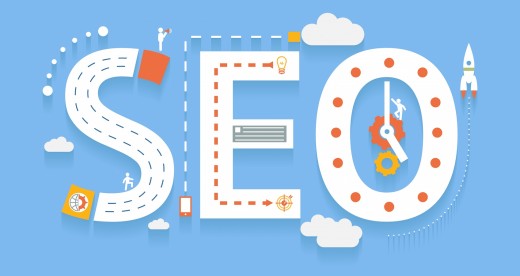
When talking about search optimization for mobile apps, the first thing that comes up is App Store Optimization or ASO. But did you know that you can also use Search Engine Optimization or SEO to boost downloads of your mobile app?
Mobile app profile pages don’t show up in search engine listings the way Web pages do. So what can you do that gets your mobile app showing up in search engine listings?
Build a landing page or a microsite to start with.
Having a presence on the Web is the starting point in leveraging the traffic flowing to your app. The more details the microsite has, the better. If you’ve got a blog associated with your product and the landing page, even better.
The more visibility you build for your landing page, or the more it shows up in relevant search results pertaining to your app’s category or keywords, the more traffic and downloads your app would receive.
So here are some of the best actionable SEO tips from the most well known experts that can increase visibility for your mobile app on search engines and thus help boost downloads.
#1 – Latent Semantic Indexing (LSI) keyword strategy for the app’s landing page
On-page optimization with the relevant set of keywords of your landing page or the microsite is crucial for Google or other search engines to know what keywords to rank your webpage for.
While the norm is to use the Google Keyword Planner tool to discover the right set of keywords (those that constitute popular searches) that relate to your product, LSI keywords play a big role in smart detection of your landing page in Google’s search results.
LSI keywords are synonyms and closely related words and they help Google understand what your page is all about. When users are searching for the word ‘Cars’, Google should know whether your search is about the movie ‘Cars’ or the vehicle. And Google can tell from the webpage’s LSI keywords whether it relates to one or the other.
This strategy by Brian Dean will help you identify the relevant LSI keywords.
Search for your main keyword in Google. Let’s assume your app is a solution to people’s sleeping problems and your main keyword is ‘Sleep Problems’. Now, there are three ways to detect LSI keywords.
- When you enter the keyword in Google search window, the drop down of associated keywords are LSI keywords.
- Google will highlight (bold) the text that is relevant in the search results. So if you scan the results, you will see words such as ‘sleep disorders’ that are LSI keywords.
- Right at the bottom of the search results page, Google showcases additional keywords that are ‘searches related to your keyword’, such as ‘how to sleep better’, ‘narcolepsy’, insomnia, etc.
When incorporating keywords in your landing page or the microsite, ensure it’s not about the density or repetition of the main keyword, but that it also includes the LSI keywords. You can also write blog posts that target the LSI keywords.
#2 – Build backlinks by tracking your competitor’s links
Building backlinks to your landing page or the mobile app’s microsite is an essential SEO strategy to increase the search ranking. The more authoritative websites link to your app’s landing page, the higher it would rank in search listings.
This one strategy, by Neil Patel, would help you identify the relevant authority websites and blogs and also help you build those backlinks quickly for your app’s landing page.
The first step is to identify your competitors that have great amount of traction and are popular in the app store charts. Once you’ve identified those, use one of the backlinking tools such as ahrefs or Cognitive SEO to look for all the pages that link back to the competitor app.
Now, you have to sift through the relevant websites or blogs that list the competitor app and write to the author to consider including a link to your app. Of course, give them a reason why they should include your app in the list. Not all would respond or be convinced, but once they do, you will start to notice the results – traffic to your webpage, downloads of your app and a higher ranking for your keywords.
#3 – Increase time on page and reduce bounce rate
Google’s algorithm tracks one important aspect of every webpage that affects its ranking – bounce rate and the time spent by a visitor on the page.
The higher the time spent by people on a webpage, the better its chances of ranking higher in searches. Google’s sole aim is to help people land relevant information through their search. They don’t want people clicking on a webpage in their search result and then hitting the back button quickly to go back to another result.
This would happen if the results were not relevant to the user. So the tricky bit here is how do you increase a visitor’s time spent on your landing page when it’s a product information page?
Rather than talk about the app’s features, talk about the problem you’re solving. First, bait the user with the problem statement itself. For example, sleep problems, as discussed in the earlier point. Then, hook the user by describing the fact that it can be solved and showcase the numbers (benefit in days, percentage, or any other quantifiable metric) or at a high-level, how the problem can be solved.
Once you’ve established these two, then begin to talk about how your app solves the problem in detail.
This strategy helps to increase stickiness for your mobile app’s landing page or the microsite and Google sees it as a relevant result for the searches performed, thus placing it higher in ranking.
Read Next: Entrepreneurship is not pretty. Are you sure you’re ready to leave your job for it?
Image credit: Shutterstock
Get the TNW newsletter
Get the most important tech news in your inbox each week.









